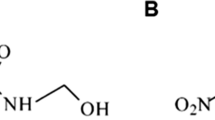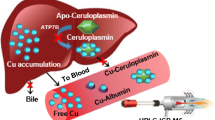Abstract
Meglumine antimonate is the active of Glucantime® used for the treatment of leishmaniasis, a tropical disease caused by parasitic protozoa, and it is estimated that 12 million people worldwide are affected. This drug mainly contains Sb(V) under the form of an organic complex with N-methylglucamine (NMG). During the synthesis of this molecule, traces of Sb(III) may be present, also probably complexed. Due to the fact that Sb(III) is considered more toxic than Sb(V), it is important to evaluate the Sb(III) concentration in the drug samples. In the literature, very different concentrations for residual concentrations of Sb(III) in the drug ampoules are found. Therefore, to have a true insight of antimony speciation, two independent analytical methods were developed in this work. We used an anion exchange method coupled with inductively coupled plasma mass spectrometry (ICP-MS) which was cross-referenced with an electrochemistry method (differential pulse polarography (DPP)) that could be used for routine analysis on the production site. To obtain Sb species in detectable forms, the complexes between Sb species and NMG need to be broken. This was obtained by diluting samples in hydrochloric acid in deaerated conditions to avoid Sb redox reactions. For the two analytical methods, the HCl concentration was optimized to obtain simultaneously a complete destruction of the complexes as well as limited redox reactions for Sb(V) and Sb(III) released species. For high-performance liquid chromatography (HPLC)-ICP-MS, a dilution with 5 M HCl gives the better results. The side reaction is an oxidation of Sb(III) which can be limited by the removal of oxygen. When DPP is used, the major problem is the reduction of Sb(V) which is present in high amount in the samples. Working with 0.6 M HCl allows this problem to be minimized. When applied to different lots of Glucantime®, Sb(III) concentration values are in good agreement for the two analytical methods, with, for HPLC-ICP-MS, the advantage of the simultaneous detection of both Sb redox species.




Similar content being viewed by others
References
Leishmaniasis (2010) In: Crompton DWT (ed) Neglected tropical diseases: working to overcome the global impact of neglected tropical diseases, WHO Report. WHO, Geneva, 91–96. http://www.who.int/neglected_diseases/2010report/en/
Brochu C, Wang J, Roy G, Messier N, Wang X-Y, Saravia NG, Ouellette M (2003) Antimicrob Agents Chemother 47:3073–3079
Miekeley N, Mortari SR, Schubach AO (2002) Anal Bioanal Chem 372:495–502
Haldar AK, Sen P, Roy S (2011) Use of antimony in the treatment of leishmaniasis: current status and future directions. Mol Biol Int. doi:10.4061/2011/571242
Dzamitika SA, Falcao CAB, de Oliveira FB, Marbeuf C, Garnier-Suillerot A, Demicheli C, Rossi-Bergmann B, Frézard F (2006) Chem-Biol Interact 160:217–224
Roberts WL, McMurray WJ, Rainey PM (1998) Antimicrob Agents Chemother 42:1076–1082
Trivelin LA, Rohwedder JJR, Rath S (2006) Talanta 68:1536–1543
Franco MA, Barbosa AC, Rath S, Dorea JG (1995) J Trop Med Hyg 52:435–437
Rath S, Jardim WF, Dorea JG (1997) Fresenius J Anal Chem 358:548–550
Flores EMM, Santos EPS, Barin JS, Zanella R, Dressler VL, Bittencourt CF (2002) J Anal At Spectrom 17:819–823
Almeida VGK, Lima MF, Cassella RJ (2007) Talanta 71:1047–1053
Cabral LM, Juliano VNM, Dias LRS, Dornelas CB, Rodrigues CR, Villardi M, Castro HC, dos Santos TC (2008) Mem Inst Oswaldo Cruz 103:130–137
Santos VS, Santos WJR, Kubota LT, Tarley CRT (2009) J Pharm Biomed Anal 50:151–157
Gonzalez MJG, Renedo OD, Martinez MJA (2007) Talanta 71:691–698
Gonzalez MJG, Renedo OD, Martinez MJA (2005) Talanta 68:67–71
Lukaszczyk L, Zyrnicki W (2010) J Pharm Biomed Anal 52:747–751
Zheng J, Iijima A, Furuta N (2001) J Anal At Spectrom 16:812–818
De Gregori I, Quiroz W, Pinochet H, Pannier F, Potin-Gautier M (2007) Talanta 73:458–465
Miravet R, Hernandez-Nataren E, Sahuquillo A, Rubio R, Lopez-Sanchez JF (2010) Trends Anal Chem 29:28–39
Lindemann T, Prange A, Dannecker W (1999) Fresenius J Anal Chem 364:462–466
Smichowski P, Madrid Y, Camara C (1998) Fresenius J Anal Chem 360:623–629
Quentel F, Fillela M (2002) Anal Chim Acta 452:237–244
Tanguy V, Waeles M, Vandenhecke J, Riso RD (2010) Talanta 81:614–620
ICH (2005) Validation of analytical procedures: text and methodology. ICH Harmonised tripartite Guideline. http://www.ich.org/products/guidelines/quality/article/quality-guidelines.html. Accessed 5 May 2012
Acknowledgments
The authors are grateful to different people from Sanofi for their valuable assistance in this study, especially Philippe Cleon and Christelle Plantard (Neuville-sur-Saône, France) for the structure elucidation of NMGA complexes, Loïc Planas (Porcheville, France) for synthesis of the NMG-Sb(III) complex, Zsolt Dombrady and Attila Nemeth (Újpest Site Tó utca, Hungary) for the synthesis of NMGA–citric acid complexes, Nicolas Invernizzi for the study about dissolution studies of antimony pentachloride (Vitry-sur-Seine, France) and Laurent Nicolas from Hypsoma (France) for starting the study on Sb speciation in N-methylglucamine antimonate.
Author information
Authors and Affiliations
Corresponding author
Rights and permissions
About this article
Cite this article
Séby, F., Gleyzes, C., Grosso, O. et al. Speciation of antimony in injectable drugs used for leishmaniasis treatment (Glucantime®) by HPLC-ICP-MS and DPP. Anal Bioanal Chem 404, 2939–2948 (2012). https://doi.org/10.1007/s00216-012-6427-3
Received:
Revised:
Accepted:
Published:
Issue Date:
DOI: https://doi.org/10.1007/s00216-012-6427-3




